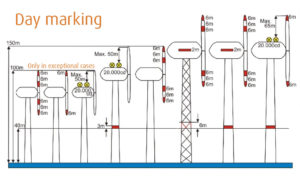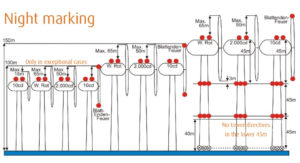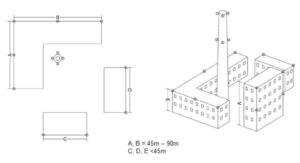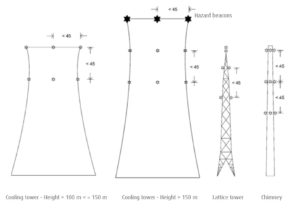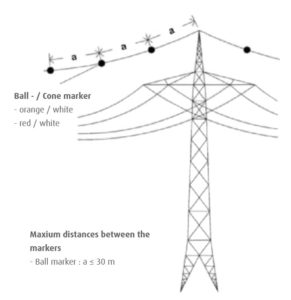Beaconing directives
Wind turbines and other industrial objects have a direct influence on air traffic. To also ensure the safety of air traffic at dusk and during the night, structures with an overall height of 100 metres and above must be identified as obstacles. Close to critical zones such as airports or approach paths, identification of objects below this height may also be necessary. National and international regulations define what form this identification should take.
The current provisions of the International Civil Aviation Authority (ICAO) define standards and recommendations for identifying general obstacles. The identification of obstacles to aviation such as chimneys, buildings, masts and wind turbines is regulated in Germany by the General Administrative Regulations (AVV) on the Identification of Obstacles to Aviation. Just like in Germany, many countries such as France (STAC) and the UK (MOD) also have detailed regulations applicable to their own air space. The FAA guidelines, which define the principles of identification on the American market especially, are also widely used around the world.
The obligation to identify obstacles in Germany involves daytime and night-time identification measures. The further red markings on the installation determine whether daytime/night-time identification is required and whether only illumination at night is needed. The most common markings on the German wind power market for installations over 100 m high are simply night-time identification according to W, red ES highlighted by two lights on the roof of the nacelle.
If the wind turbine exceeds 150 metres in height, at least one red lighting level is also required on the tower, with two obstacle lights having to be visible from each direction. The typical structure contains four to six tower lights. Internationally, some systems use only one hazard light and different brightnesses. Ask our experts about solutions for your project!
Additional sensors ensure that the lighting systems cause the fewest possible emissions. In Germany, lighting is automatically switched between 50 and 150 lx in day and night mode thanks to a dusk sensor. GPS networking ensures that all of the wind farms flash in synchrony, and ultimately with visual range measurement the prescribed daytime and night-time brightness can be reduced by 70% at visibilities of over 5,000 metres and by 90% at visibilities of over 10,000 metres.
The various forms of identification for the German wind power market are set out with examples below:
The requirements governing the marking of general obstructions to aviation such as buildings, power plant chimneys and other obstacles are different to those applicable for wind power. In cities and densely populated areas, objects over 150 metres in height must be identified, while outside such areas the requirement applies to objects over 100 metres in height. In individual cases, such as in areas around airports, lights may also be needed on objects that are 20 metres high and above. For general obstacles, the highest point must be illuminated and the outline of the object to be identified must also be recognisable. On a high-rise block of flats, for example, this would involve the corner points and the roof. If the highest point stands above surrounding objects by more than 45 metres, further lighting levels must be added (e.g. radio masts).
The obstacle lighting must generally not be more than 45 metres away and must be visible from all sides. If this is not possible, additional measures must be taken to ensure that the outline of the object can be recognised. On narrow obstacles (such as wind measuring masts, chimneys, etc.), two obstacle lights must always be used on each lighting level and must be visible from every direction. On tower cranes that revolve upwards, at least 3 lights are needed (on the jib, above the cabin and on the counterweight), while 2 lights are sufficient for tower cranes that revolve downwards.
If the highest point cannot be illuminated for technical reasons, the light must be affixed no more than 15 metres (airport areas 3 m) below it. If an object is more than 100 metres high and an un-illuminated area rises above it by at least 15 metres (airport areas 3 m), hazard lighting with a red intensity of 2,000 cd must be used. This type of lighting may also need to be used to identify particular hazards. Cable-like obstacles such as overhead lines, funiculars, tensioning ropes and similar can be identified with line markers. These ball-shaped markers must, in accordance with German regulations, have a diameter of 0.6 metres and be positioned at intervals of no more than 30 metres.

